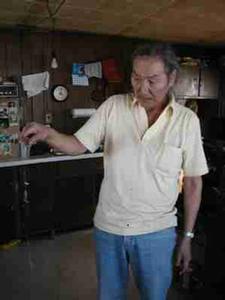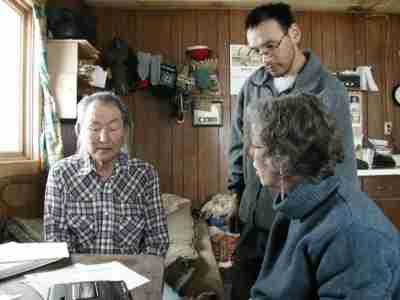
|
|
11 March, 2002

Today, Carol and I spent a large part of the afternoon interviewing Arthur Ahkinga in his home. With his input, Dr. Jolles has been able to add a great deal of detailed information to the food chart that she has been compiling with members of the Diomede community. Arthur is a fluent Inupiaq speaker and has contributed a great deal of knowledge about the varieties of marine animals that are available and relied upon for food throughout the different seasons, as well as recording their Inupiaq names. In addition to the food chart, Arthur has been sharing memories of his early experiences in subsistence, recounting how he, as a young teenager, first began to learn about hunting and how some of those techniques have changed and evolved from his earliest memories to the present. Traditionally, men and women have very different, but equally important roles and tasks that contribute to the subsistence economy. A great deal of the knowledge and training of younger members of the community involved observation and parcticipation rather than direct instruction. A young person would often "follow" an older relative, being mentored and observing the ways in which he/she performed subsistence activities and tasks. Although Arthur is not yet considered to be an elder, he has a great deal of knowledge and experience to share, and we have been fortunate to spend many hours in his company.

Here, Arthur Ahkinga is discussing the way in which this fishing line was made and used. Many yards of fishing line are wrapped around a wooden "bobbin" carved from drift wood. This wooden piece measures approximately a foot in length and is wound with commercially available nylon line. When fishing, the line is weighted and either one or two fish hooks are used depending on the kind of fish one was trying to catch. The baited fishing line is lowered through a hole in the sea ice. In years past, traditional fishing lines were made from twined threads of baleen, rather than commercial nylon line.

Arthur Ahkinga, Edward Soolook and Carol Jolles.
Contact the TEA in the field at
.
If you cannot connect through your browser, copy the
TEA's e-mail address in the "To:" line of
your favorite e-mail package.
|
